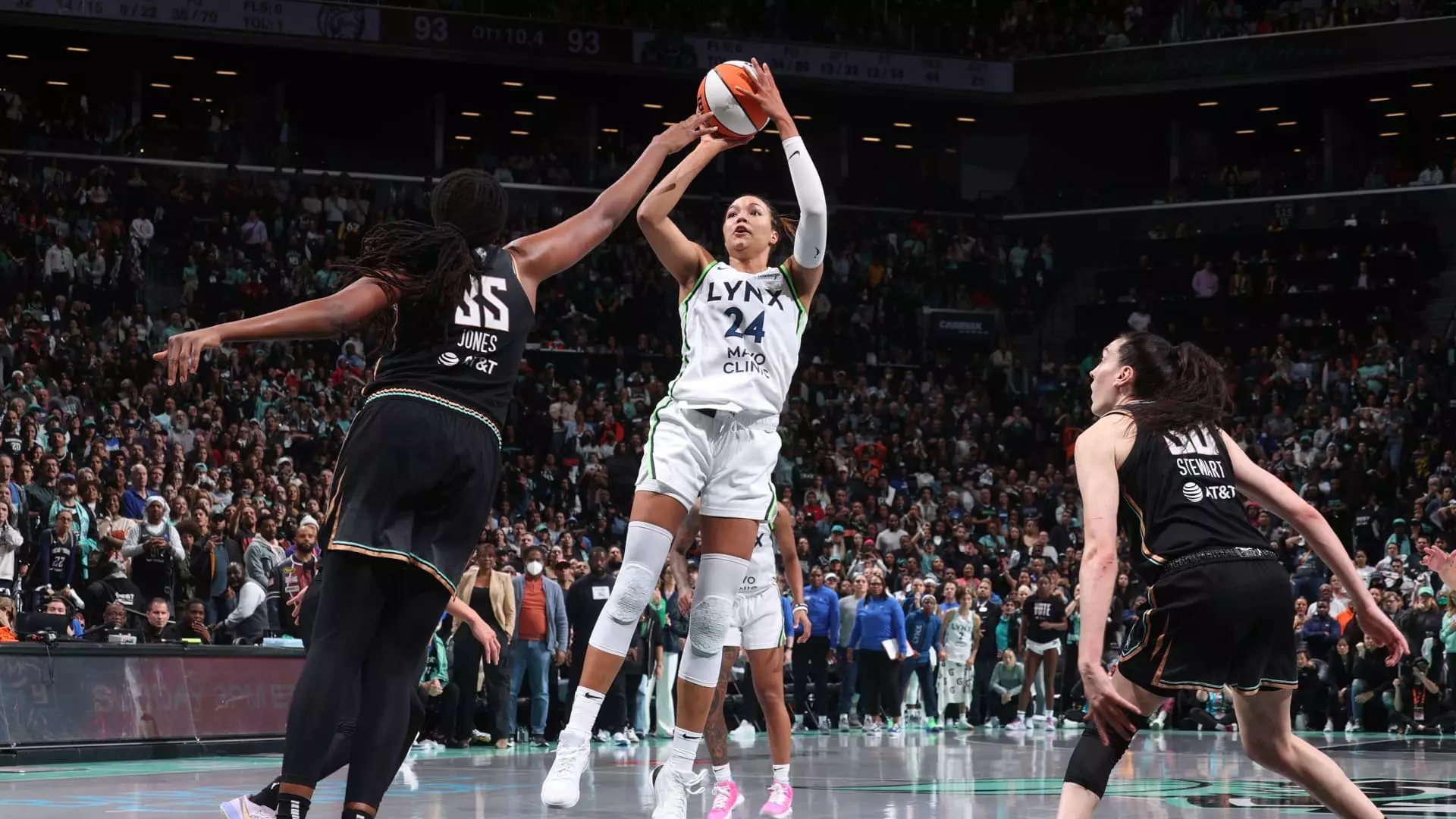The WNBA’s recent decision to introduce three new expansion teams in Cleveland, Detroit, and Philadelphia represents an undeniably ambitious push in professional women’s basketball. Growing from 13 teams to 18 over the next five years, the league is clearly signaling a robust belief in its market potential and cultural relevance. Commissioner Cathy Engelbert’s enthusiasm is palpable, hailing the occasion as a “monumental day.” While enthusiasm is certainly warranted for an emerging league striving to cement its place in American sports, we must critically assess whether this rapid expansion is rooted in sustainable growth or if it risks ballooning prematurely, potentially jeopardizing long-term stability.
Historical Echoes and Lessons Unheeded
Cleveland and Detroit’s returns to the WNBA are perhaps the most emotionally charged elements of this expansion rollout. Both cities previously housed WNBA teams—Cleveland’s Rockers and Detroit’s Shock—which ultimately folded or relocated. The Rockers’ seven-year tenure ended in 2003 due to financial insolvency and poor attendance; Detroit’s Shock flourished with three championships but still moved after a decade. Reintroducing franchises to these cities is more than just a nostalgic nod; it is a high-stakes experiment to see if the economic and cultural conditions have matured enough to create lasting success.
Yet, herein lies a major concern: market conditions and fan bases in women’s professional basketball have historically been fragile. Surely, cities with rich basketball legacies seem logical choices, but history warns that legacy alone cannot guarantee viability. It raises the question of whether the WNBA is being truly pragmatic or overly optimistic—are the organizing bodies ensuring robust, sustainable infrastructure is in place, especially given the $250 million franchise fee that sets a new financial precedent for the league?
Franchise Fees: Sign of Strength or Barrier to Entry?
The $250 million franchise fees for these new teams represent a record high in the WNBA’s history. On the surface, such a valuation projects confidence and an increased capital flow into the league, indicating greater league valuation and potential returns. However, this steep entry price also risks limiting diversity among potential owners and might skew ownership toward wealthier, established sports conglomerates rather than passionate independent figures dedicated solely to women’s basketball development.
Ownership groups from Cleveland and Detroit, led by prominent sports figures and organizations already controlling NBA teams, suggest a strengthening of ties between men’s and women’s professional basketball. While this could lead to better resources and marketing synergies, it could also inadvertently tether the WNBA’s identity and success to the health and priorities of men’s franchise owners, who may view these teams as secondary investments rather than core commitments. Could that dynamic unintentionally undermine the WNBA’s autonomy and innovation?
Geographic Choice: Strategic or Sentimental?
Philadelphia rounds out the trio of new markets, an undeniably rich sports city with a deeply ingrained basketball culture. The ownership by Harris Blitzer Sports & Entertainment, also overseeing the 76ers, further cements the trend of established NBA owners expanding into the WNBA space. While Philadelphia seems both logistically and culturally ripe for reintroduction of professional women’s basketball, it’s notable that other major markets—such as Houston, Kansas City, and Miami—were left waiting in the wings.
The league’s expressed interest in Houston for future expansion suggests a phased approach in market prioritization, but it also highlights potential tension between market desirability and cautious growth. Expanding too quickly into saturated or unprepared markets without sufficient grassroots support, media coverage, or sponsorship can risk diluting the league’s product. Choosing historic sports cities might feel symbolically correct, but does it align with analytic rigor on fan engagement and commercial infrastructure?
The Long Road Ahead Requires More Than Optimism
At its core, this expansion is a statement about confidence in women’s professional sports at a time when societal conversations about gender equity demand tangible progress in representation and investment. Increasing WNBA teams by nearly 40% over five years underlines a hopeful future filled with greater visibility, more playing opportunities, and potentially enhanced financial rewards for athletes. Yet, these aspirations must be balanced with sober realism about the complexities of sports markets, historical precedents of franchise failures, and economic challenges that women’s leagues continue to face.
To be clear, the WNBA’s growth is exciting and necessary, but the path forward requires a more thoughtful, data-driven strategy as well as deeper community engagement. Expansion should never be viewed just as a symbol of progress but as a responsibility to ensure that each team planted in a new city has the tools, fan base, and commitment to thrive long-term. Without such considerations, this bold leap may ultimately be less of a giant stride forward and more of a precarious gamble.

Leave a Reply